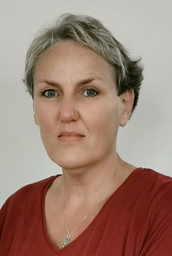Collaborators
Team Sermet, Institut Necker-Enfants Malades
We investigate misfolded protein biogenesis and correction, taking the CFTR protein as a model. We focus on the role of intermediary filaments in assisting CFTR trafficking to the apical membrane. Our translational research aims to implement personalized therapy in patients with cystic fibrosis.
Team Bourdoulous, Institut Cochin

Our team has a long-standing interest in vascular cell biology in the context of infection, inflammation or cancer. A wide range of pathogens directly targets peripheral and brain endothelial cells. Among those, Neisseria meningitidis (meningococcus) is still a leading cause of two rare but devastating invasive diseases, meningitis and sepsis. We have developed interdisciplinary approaches to elucidate the intricate network of interactions and molecular strategies selected by thisbacterial pathogento colonize humanperipheral and brain vasculature and get access to the brain. We are deciphering the molecular and cellular events leading to vascular dysfunction, thrombosis, organ failure and immune escape by these pathogens. Our original findings led to the design of innovative therapeutic compounds against meningococcal diseases andincidentlyagainst HER2+ cancers.

The communication between the cells in the body passes through the activation of molecular switches known as receptors. In response to external chemical or physical signals, receptors stimulate a series of molecular partners capable of propagating a biochemical signal inside the cels. Ultimately, this signal elicits a cellular response, which is adapted to the external signal. Our team focuses on the regulation of receptors and on the organization of molecular scaffolds that carry their signals, under either normal operating conditions or during various diseases.
Team Witko-Sarsat, Institut Cochin

The research project of the team explores the biology of neutrophil which is a key cell in inflammation and in the defense against bacteria. However, if activated neutrophils are not properly eliminated, they can damage the host tissues.
Our team studies neutrophils in autoimmune vasculitis because they play a pivotal role in the immune dysregulation and in the destruction of small vessels.
The new mechanisms in the control of neutrophil activation that we uncover could be relevant in other diseases in which neutrophils are involved like in arthritis, pulmonary inflammation, septic shock and cancer.
Team Skurnik, Institut Necker-Enfants Malades

In western countries, 20% of the bacterial meningitis in neonates is due to Escherichia coli K1. We use TnSeq to (i) identify and understand the genes and regulatory genetic elements contributing to optimal fitness of E. coli K1 from GI tract colonization, to crossing of the blood brain barrier and, (ii), identify and develop new vaccine candidates via a process we have called TnSeq vaccinology. This approach exploits the TnSeq tool to test the effect of host immunity, induced by vaccination with a broadly-protective immunogen such as antibiotic-killed cells, on selection of strains with Tn-interrupted genes. This approach should impact all types of vaccine antigens, not just proteins, a limitation of current antigen identification systems such as reverse vaccinology.
Laurent Muller, Team Germain, Collège de France
Collaboration with Laurent Muller (Senior Researcher). The sequence of biological events that permits an organism to maintain tissue viability in hypoxia remains poorly understood. Variations in oxygen concentration lead to respiratory, metabolic and vascular adaptations in tissues. How hypoxic endothelial cells (EC) integrate chemical signals with mechanical cues from their local tissue microenvironment in order to produce functional capillary networks that exhibit specialized form remains an open question. A key role of hypoxia in the regulation of many endothelial functions is nevertheless well established and growing evidence show that angiogenesis, defined as the events leading to blood vessels formation by sprouting or growth of preexisting vessels, can be triggered by hypoxia, both during development and in pathological conditions, such as cardiovascular ischemia and tumors. Our team is interested in understanding how angiogenesis and vascular integrity are regulated in hypoxic conditions (Fig 1).
Craig Lab, Simon Fraser University, Canada

Work in the Craig lab focuses on Type IV pili, hairlike filaments on the surfaces of many bacterial pathogens, such as Vibrio cholerae, pathogenic Escherichia coli and Neisseria spp. Type IV pili are dynamic filaments that rapidly polymerize and depolymerize their pilin subunits in order to perform diverse functions critical to bacterial virulence, including twitching motility, host cell adhesion, microcolony formation, DNA uptake and protein secretion. We are working to understand the process of pilus assembly and disassembly by investigating the molecular architecture of the pilus filaments and their assembly machinery, with the goal of targeting and even exploiting these systems for antimicrobial therapies.
Alain Perret, Team Salanoubat, Génoscope

Millions of proteins identified in genome and metagenome sequencing projects have been included in the databases. The accumulation of data has enabled an enhanced understanding of the living world. Nonetheless, the increase in the number of sequences induces a decrease in the number of proteins associated, with reliability, with a function. Applied to the study of metabolism, the increase in proteins with no validated function calls into question the real completeness of the knowledge of the chemical reactions occurring in the living world
